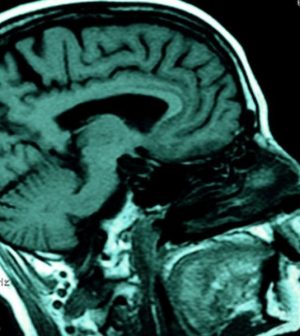- Navigating Your Midlife Crisis: Embracing New Possibilities
- City Raccoons Showing Signs of Domestication
- Mapping the Exposome: Science Broadens Focus to Environmental Disease Triggers
- One Week Less on Social Media Linked to Better Mental Health
- Your Brain Changes in Stages as You Age, Study Finds
- Some Suicide Victims Show No Typical Warning Signs, Study Finds
- ByHeart Formula Faces Lawsuits After Babies Sickened With Botulism
- Switch to Vegan Diet Could Cut Your Greenhouse Gas Emissions in Half
- Regular Bedtime Does Wonders for Blood Pressure
- Dining Alone Could Mean Worse Nutrition for Seniors
Is There a ‘Risk-Taking’ Center in the Brain?

Why does one person take a lot of risks and another proceed with more caution?
Researchers came closer to that answer with a new study that shows risk-taking behavior may be related to characteristics in the brain.
The study found there is no one risk area in the brain. Instead, there are many regions where anatomy is altered in people who take risks. Yet there is a connection between genes, lower levels of gray matter and risky behavior, researchers concluded.
“People have different tendencies to engage in behavior that risks their health or that involve uncertainties about the future,” senior author Gideon Nave said in a University of Pennsylvania news release. He’s an assistant professor of marketing at the university’s Wharton School.
The research team gathered brain scans and genetic data from more than 12,600 people of European ancestry and then from another 13,000 people. All were aged 40 to 69 and enrolled in the UK Biobank.
Investigators used self-reported risky behaviors — smoking, drinking, sexual promiscuity and driving above the speed limit — to create an overall indicator of risk tolerance.
They estimated the relationship between total gray matter volume across the brain and the risk-tolerance score. Higher risk tolerance was correlated with overall lower gray matter volume, researchers said, though only an association was seen. Gray matter carries out the basic functions of the brain.
The research team also looked at which specific areas of the brain had the strongest relationship between risk taking and reduced gray matter. They found expected links between risk and the amygdala, which is involved in fear and emotion, but also found links in other regions, such as the hippocampus, which creates new memories, and the cerebellum, which involves balance and coordination and has long been suspected of being involved in decision-making.
Researchers also developed a risk score to try to make connections between genes, brain and behavior, using a genome-wide association study of nearly 300,000 people.
They found that the risk score explained 3% of the variation in risky behavior. It was correlated with gray matter volume in three areas of the brain, and researchers determined that differences in the gray matter of these locations carried out around 2% of genetic disposition toward risky behavior.
“It appears that gray matter of these three regions is translating a genetic tendency into actual behavior,” said co-author Philipp Koellinger, from Vrej University Amsterdam.
The findings appear in the online journal Nature Human Behaviour.
More information
The U.S. National Institute of Neurological Disorders and Stroke offers some brain basics.
SOURCE: University of Pennsylvania, news release, Jan. 28, 2021
Source: HealthDay
Copyright © 2025 HealthDay. All rights reserved.










